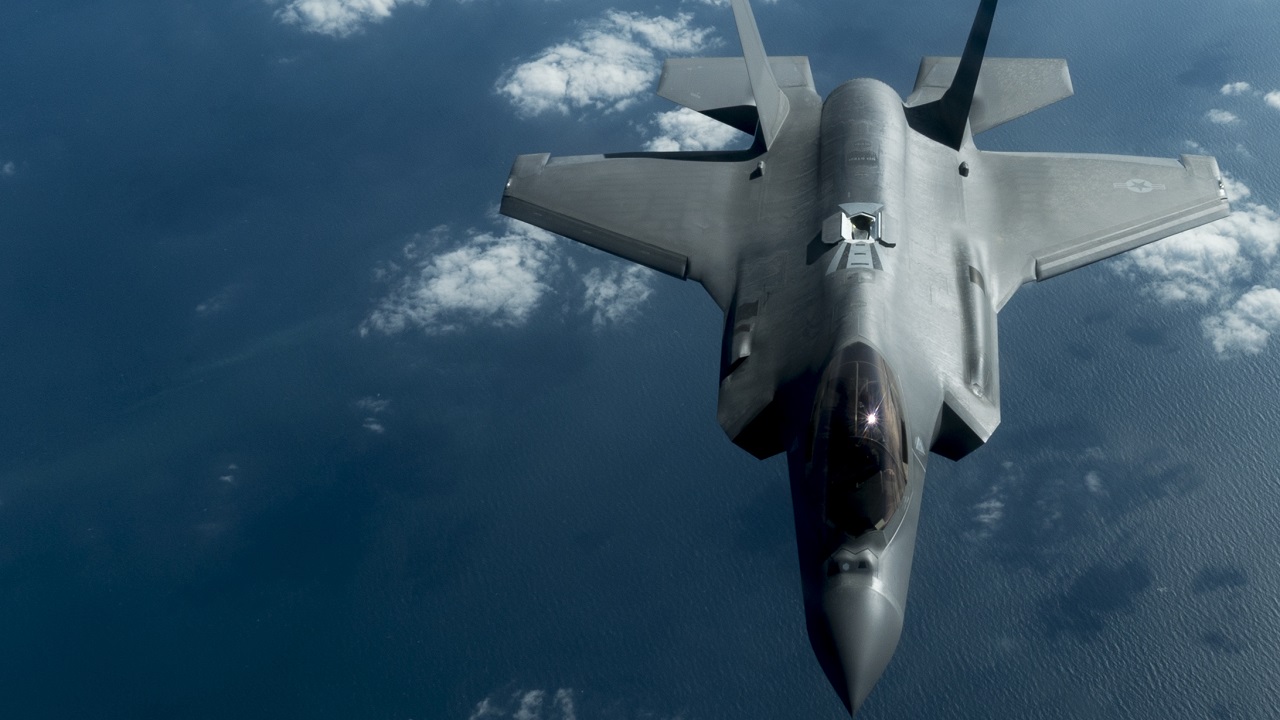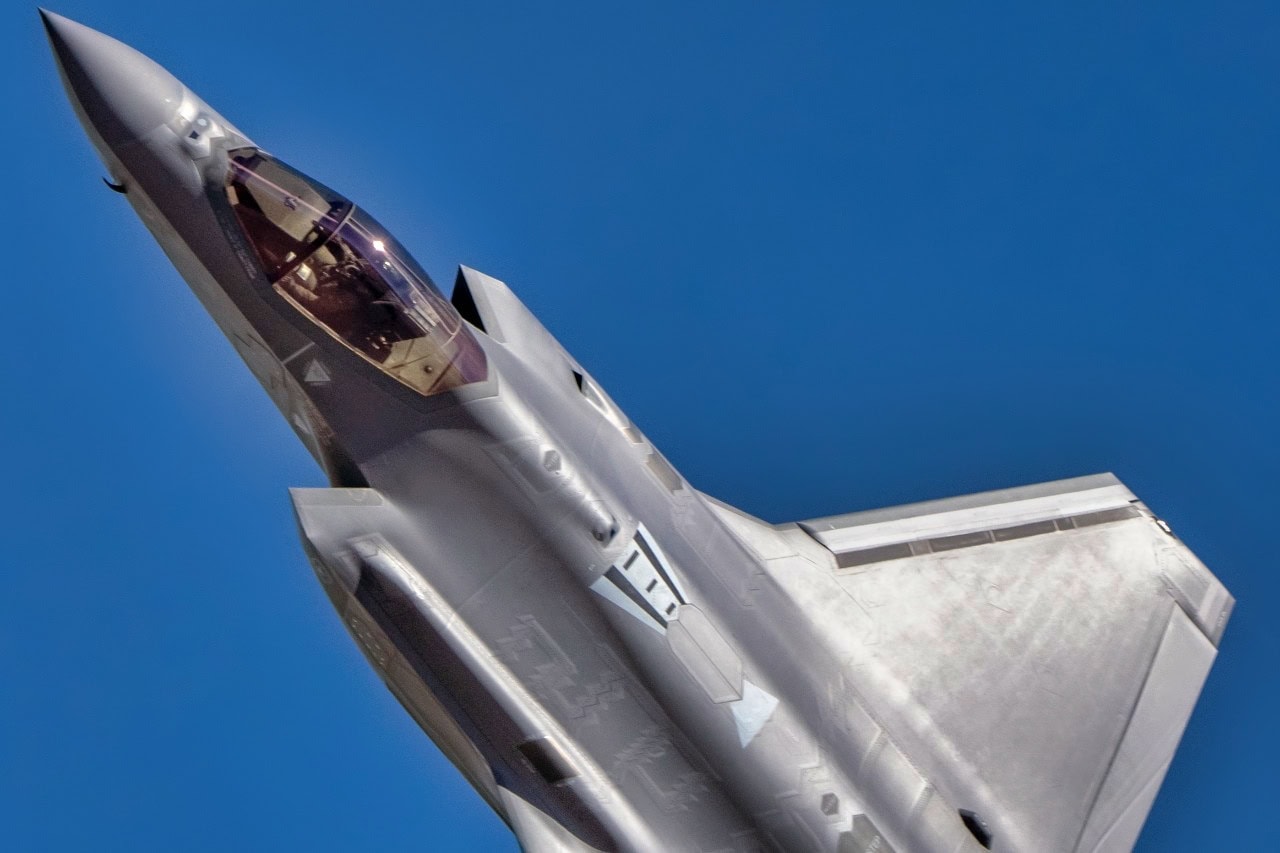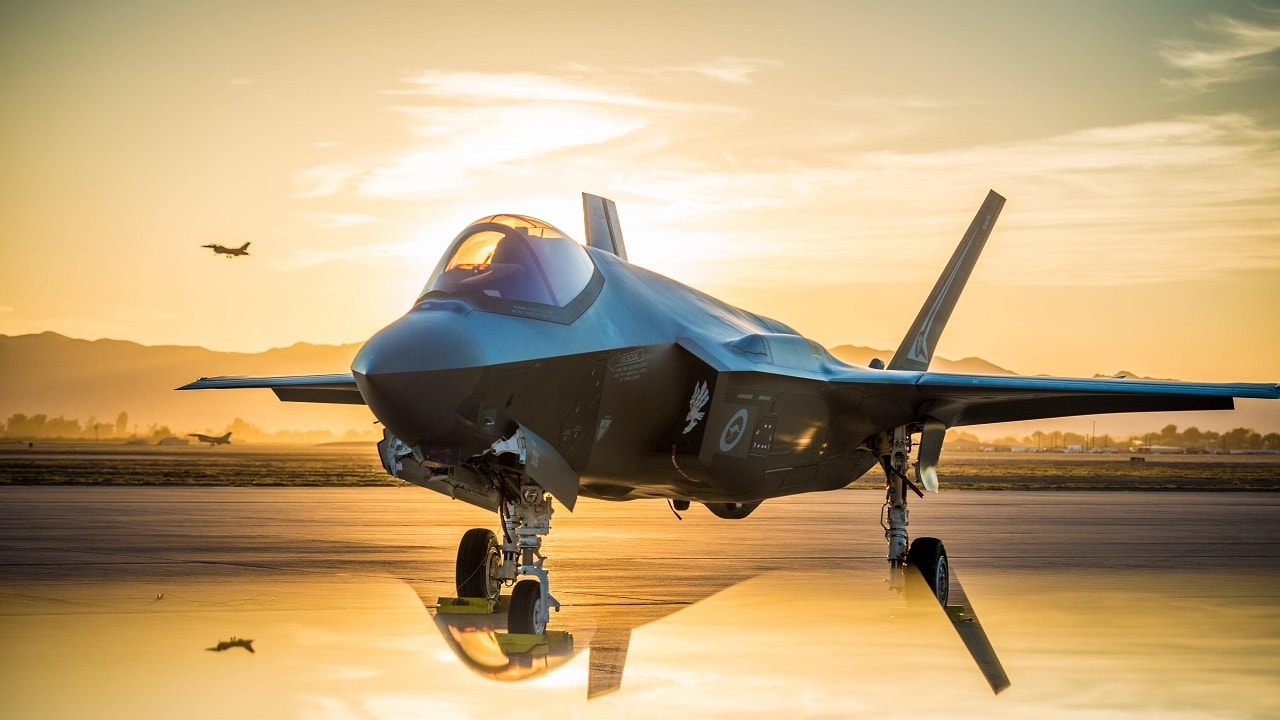Key Points and Summary: The F-35 Lightning II, America’s fifth-generation multirole stealth fighter, continues to evolve with its latest Block 5 upgrades.
–The Cost Problem: Despite criticisms over high program costs—exceeding $1.7 trillion with sustainment—the jet’s technology remains unmatched.
-New enhancements will include a laser countermeasure system, an improved power and thermal management unit, and a significant Engine Core Upgrade, offering more thrust from the current F135 engine.
-These changes build on previous Block 4 and TR-3 tech refreshes that improved targeting, expanded missile capacity, and added non-kinetic electronic warfare capabilities.
–Critics like Elon Musk question its cost, but the F-35’s capability remains essential for U.S. and allied forces.
Why America’s F-35 Fighter Keeps Getting Better and Better Despite the Costs
The F-35 Lightning II, developed by Lockheed Martin, is the United States’ fifth-generation multirole stealth fighter. Although the program has faced severe criticism for its cost — estimated at over $1.7 trillion when including sustainment — the aircraft has a host of capabilities unmatched by virtually all other fifth-generation platforms, barring the U.S. Air Force F-22, that set it apart from both fourth-generation fighters and other fifth-generation platforms.
The jet’s broad adoption in the U.S. Air Force, Navy, and Marine Corps, as well as its export success overseas, is a strong indicator of the capabilities the jet brings to the table — despite its high sticker price.
Since its introduction, the F-35 has integrated a steady stream of upgrades and improvements to its avionics, onboard sensor suite, and software, which have made the jet increasingly more capable. The latest Block V upgrades will see a number of significant changes to the F-35.
Continuous Upgrades and Evolving Capabilities
The latest of the F-35 improvements, the upcoming Block V upgrades, are set to deliver significant advancements. The advancements brought by Block V are expected later in the decade and throughout the 2030s and will include improvements to its engine and defensive capabilities.
An anticipated Block 5 upgrade will be the integration of a laser countermeasure system to jam or disable incoming missiles.
In order to address the high levels of heat the F-35’s electronics shed, a Power and Thermal Management Unit (PTMU) will be part of the Block V upgrades as well.
One of the most significant Block 5 upgrades, however, will be the F135 Engine Core Upgrade (ECU), essentially a higher-thrust alteration to the F-35’s current engine.
Previous Block 4 upgrades increased the jet’s missile carriage capacity, improved target recognition, and introduced new “non-kinetic electronic warfare capabilities.” The jet’s Tech Refresh-3 (TR-3), which provided the framework for Block 4 upgrades, introduced “open mission systems architecture, a new integrated core processor with greater computing power, an enhanced panoramic cockpit display, a larger memory unit and other classified capabilities.”
The Future of the F-35
The incoming Trump administration’s stance on the F-35 program is a mixed bag of perspectives and opinions. President-elect Trump has at times praised the program’s stealth capabilities and acknowledged the F-35’s importance to American and allied strategies and force postures.

A U.S. Air Force F-35 Lightning II aircraft, assigned to the 34th Expeditionary Fighter Squadron, flies over the U.S. Central Command area of responsibility, Jan. 07, 2019. The Lightning II is a fifth-generation fighter, combining advanced stealth with fighter speed and agility that provides U.S. Air Forces Central Command lethal war-winning airpower. (U.S. Air Force photo by Senior Airman Brandon Cribelar)
However, incoming Department of Government Efficiency czar Elon Musk has sharply criticized both the F-35 program as well as the engineers and designers behind the design, seemingly advocating instead for large quadcopter drone swarms instead as part of his government cost-savings initiative.
Despite the loud and very public criticisms emanating from the future leadership of DOGE, however, the F-35’s capabilities are unlikely to be eclipsed by drone swarms, which are particularly vulnerable to electronic warfare and do not offer stealth capabilities, nor do they provide significant range or weapons capabilities.
Though the F-35 remains the subject of hot debate and deserves criticism for the program’s high costs, the fighter is unmatched in terms of capabilities.

U.S. Air Force Maj. Kristin “BEO” Wolfe, F-35A Lightning II Demonstration Team pilot and commander, flies during the 2021 Reno Air Races, Reno, Nev., Sept. 18, 2021. The 2021 Reno Air Races featured performances from the U.S. Air Force F-35A Demo Team and the U.S. Air Force Thunderbirds. (U.S. Air Force photo by Capt. Kip Sumner)
In terms of stealth, a diverse mission set, and a steadily evolving modernization program, the F-35 is unrivaled by any other non-American fifth-generation stealth fighter.
For now, at least, the F-35 is here to stay.
About the Author: Caleb Larson
Caleb Larson is an American multiformat journalist based in Berlin, Germany. His work covers the intersection of conflict and society, focusing on American foreign policy and European security. He has reported from Germany, Russia, and the United States. Most recently, he covered the war in Ukraine, reporting extensively on the war’s shifting battle lines from Donbas and writing on the war’s civilian and humanitarian toll. Previously, he worked as a Defense Reporter for POLITICO Europe. You can follow his latest work on X.

